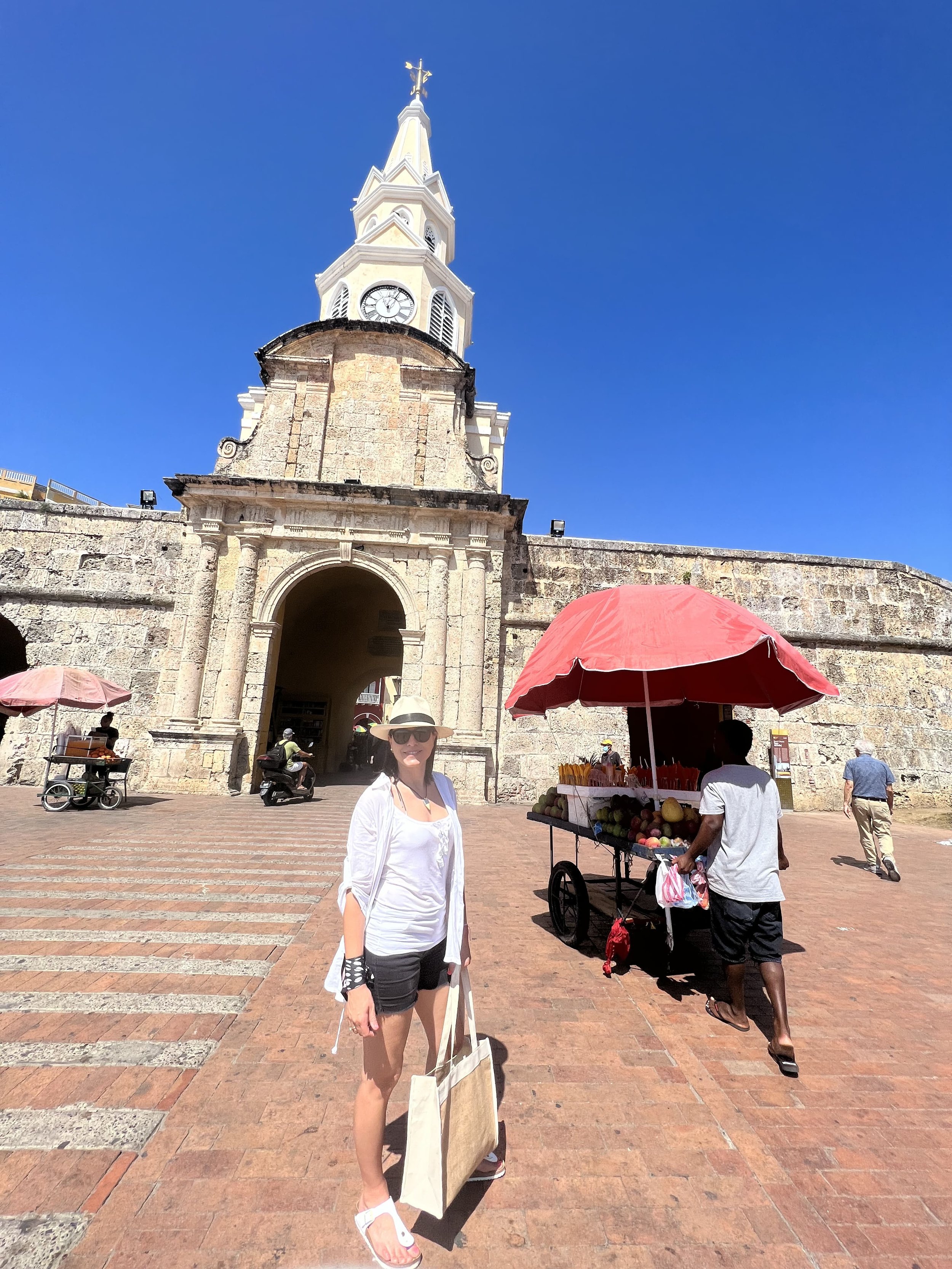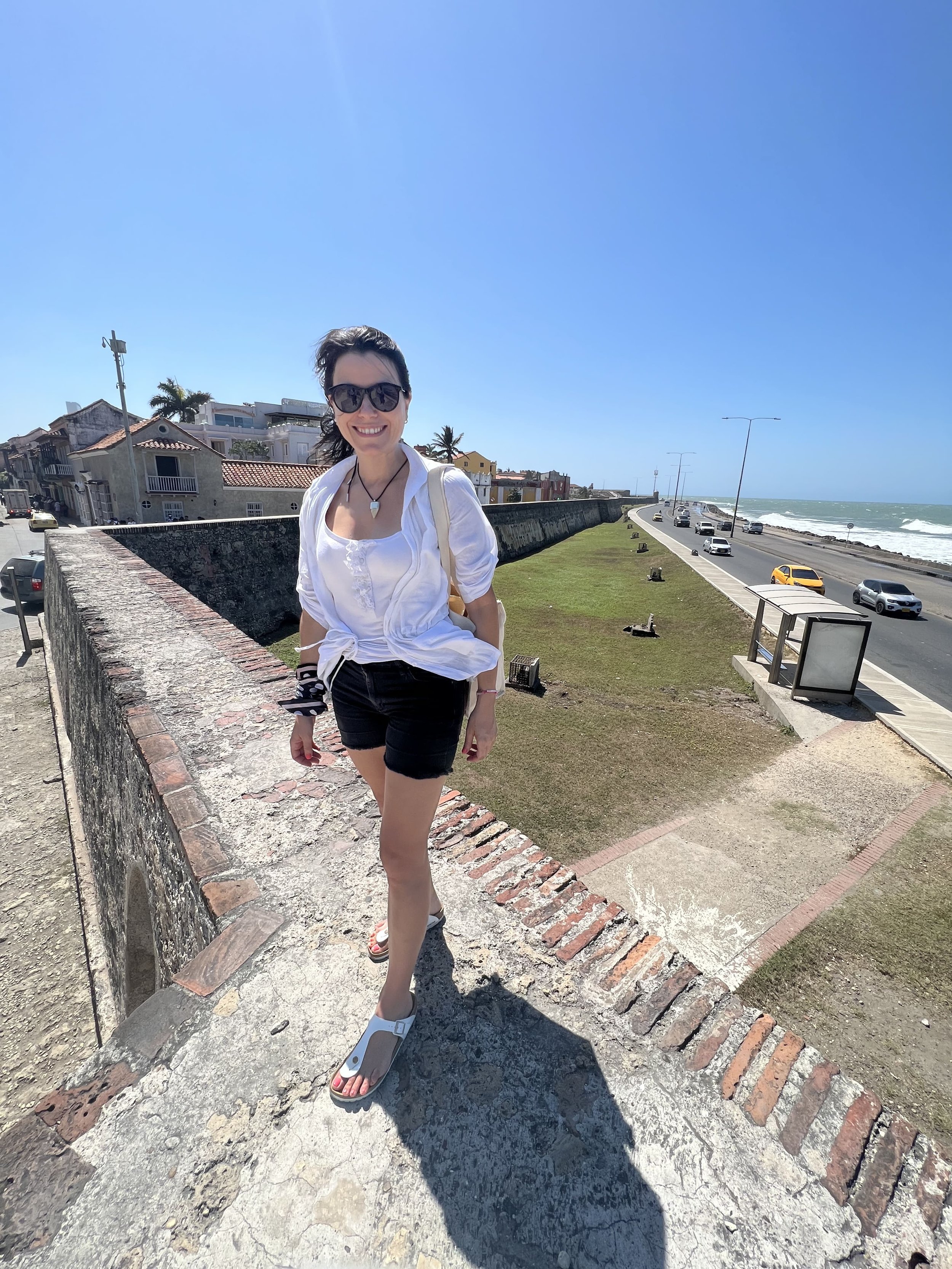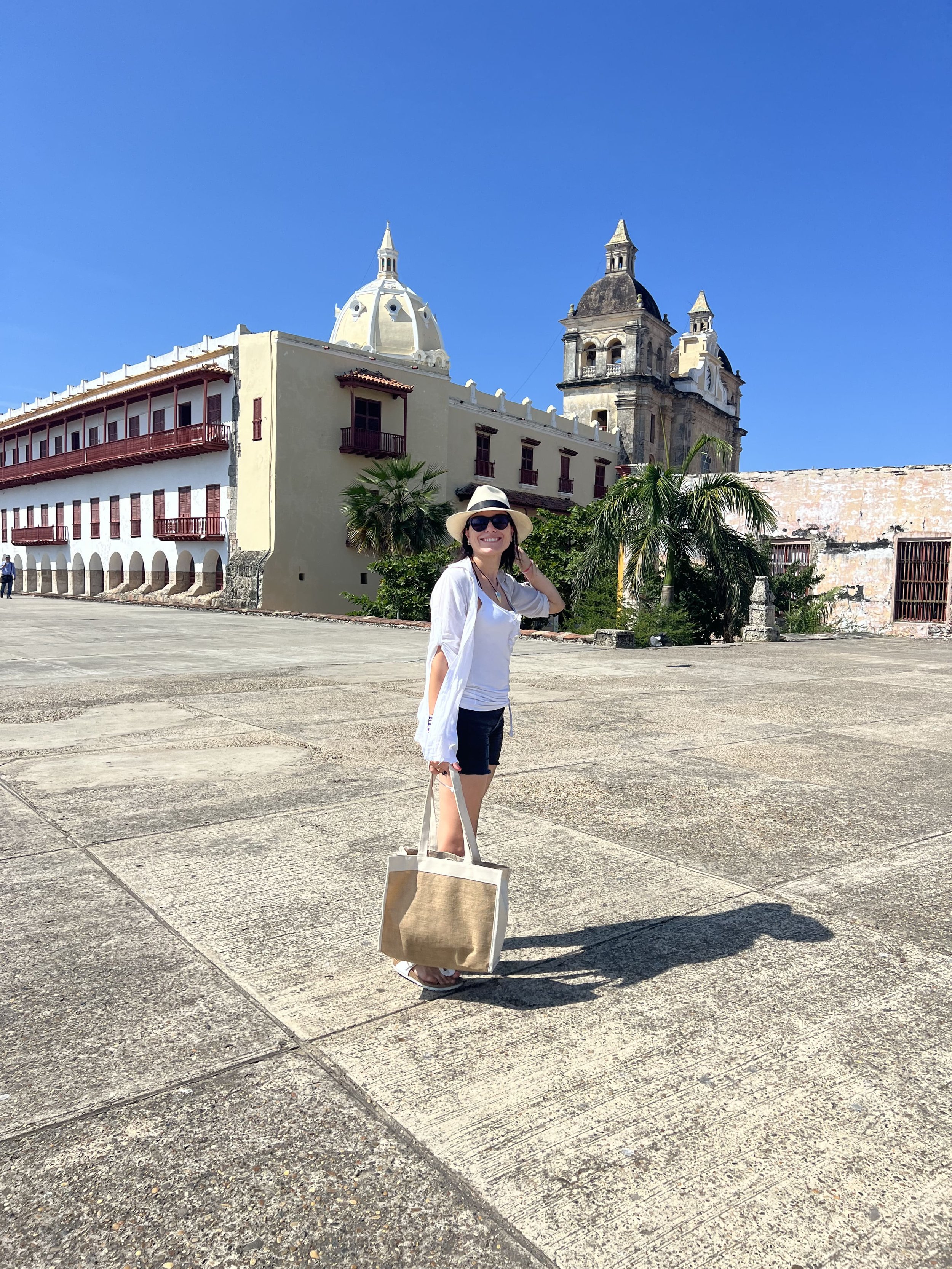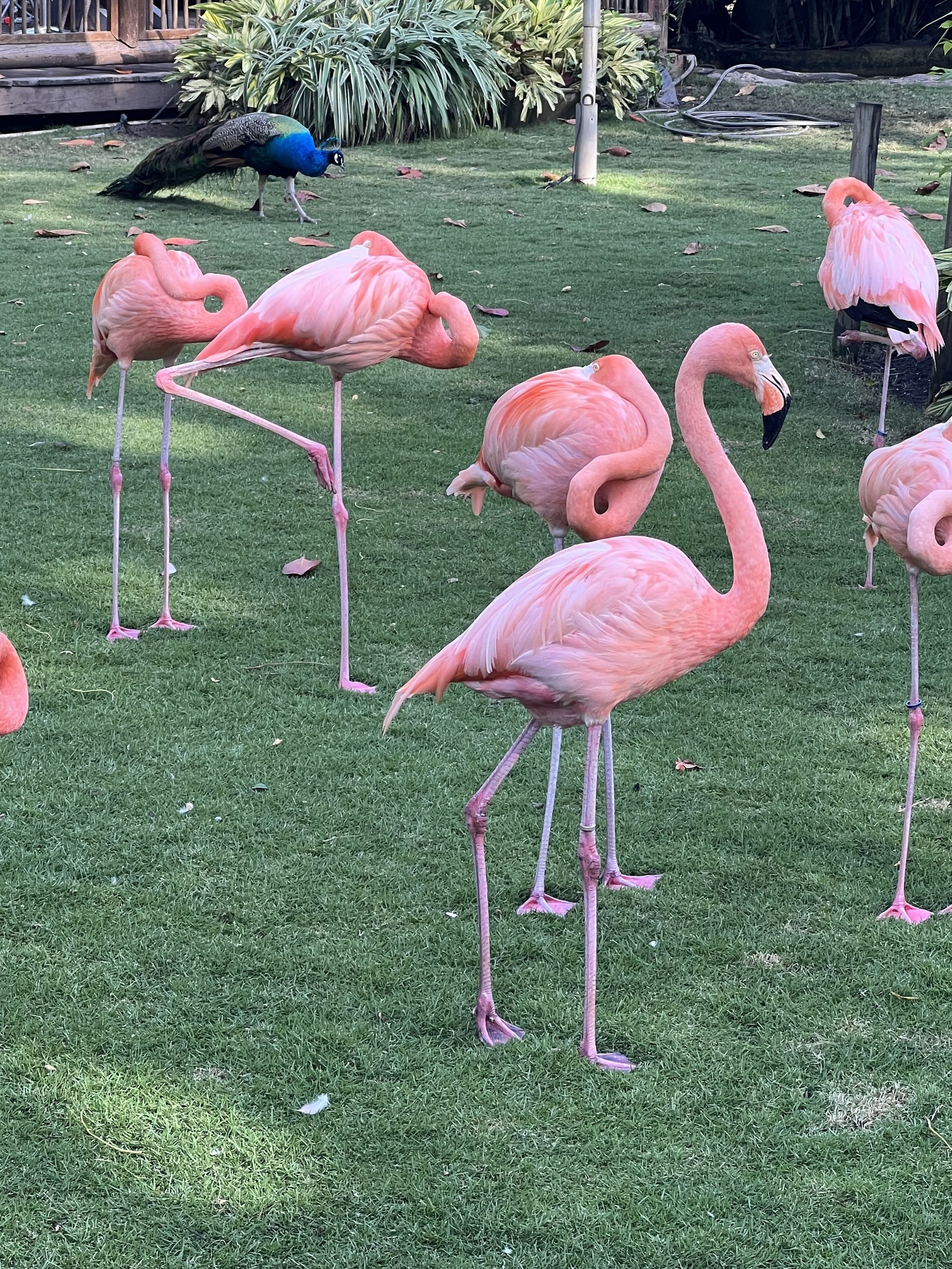Cartagena
Heat and color@tripticity_ had visited the city on a trip more than fifteen years ago, before a flight to San Andres to enjoy a few glorious days at the beach with my family. I remembered it for its rainbow architecture and Caribbean climate, its historic buildings, its wall and its arepas.
So, going back there with Mr. @tripticity_ was a gift of destiny. In those years I never imagined myself getting lost in its streets with him, enjoying it, enjoying us.
On that trip we had spent New Year's Eve in the old neighborhood and I still remember how everyone took their tables out to the street to start the new year outdoors, in full neighborhood unity. Years later, on a cruise itinerary through the southern Caribbean, I returned to Cartagena de Indias.
In the early morning the ship slowly approached, which allowed us to have, from the comfort of our balcony, a first great panoramic view of the city.
From the port to the vicinity of the historic center, an Uber ride takes about twenty minutes, but keep in mind that in the hours of heavy traffic the delay can even double, because the streets are very narrow and there are too many cars. Not to mention when a cruise ship arrives.
We started our tour on foot from the Hotel Real Armería, right in front of the Román bridge, to get lost in the narrow streets of Getsemaní, the characteristic bohemian neighborhood nowadays converted into a center of hostels, bars and restaurants for tourists. Its narrow passages preserve the historical names as in the walled city. The most fun and lively are perhaps the Callejón Angosto, the Calle del Espíritu Santo or the Callejón Ancho. Their old façades, restored with colors and murals, plus the ceiling-to-ceiling hangings, either with flags of countries or the city's own, plus the music emanating from the countless little bars on the street, make them festive and unique. We visited these passages when it was early in the morning so we could walk through them in relative tranquility, because as the hours go by they are filled with more visitors.
From there we made a short walk to the Plaza de la Paz, to enter the walled city through the Clock Tower.
The walled city was the one that turned Cartagena into Colombia's tourist destination par excellence. Full of tourists, street vendors with their carts loaded with sweets or exotic and aromatic fruits, artisans offering their work, some very few authentic and many others of clear Chinese manufacture, but all ready to put on a great show for visitors.
Once in the walled city, built in the XVI century, even though it was early in the morning, all its streets were full of tourists. In addition to ours, another cruise ship had docked that day in its port.
Despite the crowds, we enjoyed its squares, its cobblestone streets, its colorful colonial houses, its balconies and even its trinket vendors. At the beginning we felt them a bit annoying, almost as much as the mosquitoes that wanted to hinder our tour, but we decided to repel the latter with Off and the first ones just as much as to ignore them. Although it sounds of little social sensitivity, the only way to visit Cartagena is to avoid them after a polite "no, thank you" with the right indifference, so that they understand that one does not have a minimum interest in their offer. Otherwise, they may accompany you for a long time pressuring you to make the purchase.
Then we went to the typical Colombian sweets corner, where each stall offers its delicacies, perhaps the most peculiar is the coconut that is seasoned with different flavors such as dulce de leche, caramel or tamarind.
Then we took the obligatory photo on the facade of the sanctuary of San Pedro Claver, then we went to the wall and took the next postcard in some of the bastions that remain. On the way, we were amazed by the work of a craftswoman with toquilla straw, in particular some round earrings, very light, but we hesitated about the purchase, perhaps because we were overwhelmed by so much offer from the vendors.
A short walk to the University of Cartagena to visit the bronze bust that celebrates the life of the author of "Love in the Time of Cholera". In the central courtyard of the Cloister of La Merced are the ashes of the writer Gabriel García Márquez, winner of the Nobel Prize for Literature in 1982.
The next stop was at Gertrudis, to admire the iconic sculpture by Fernando Botero on the corner of the Plaza de Santo Domingo. A proud fat woman, with pronounced curves and naked, a symbol of empowered women. Just in front of the square, the church of the Convent of Santo Domingo, dating from the sixteenth century.
From there we headed towards Carrera 7 to pass by the facade of the house of the genius García Márquez, and then to Plaza San Diego. It was getting hot so it was time for a stop. The options for a snack were totally opposite, either we had a drink at the luxurious Sofitel Legend, Santa Clara Cartagena, or we went for the traditional cheese bread. Considering that during our visit to Panama City we had already stayed at its Casco Viejo twin, the decision was obvious, we had to go for the popular. So, we walked back down the narrow street to visit El Pandequeso, an excellent little stall selling the distinctive varieties of cheese bread. The place has only two or three small tables, it is more like a "to go" than a place to sit down, but good fortune always accompanies us, so we were able to vacate one of them to enjoy the exquisite Colombian bread while we recharged our energy. We tried not only the traditional cheese bread, but also the version topped with mozzarella, along with two sodas, Kola Román and Colombiana. Simply exquisite.
The break served to convince me that those handmade rings had to be mine, so we went back to the side wall of the San Pedro Claver church in search of them and, indeed, that tempted us to walk along the artisans' promenade, right next to the wall, where another purchase was made. This time, a very small purse in a kind of thick raffia.
Then we returned through the neighborhood of Getsemaní, but we could not say goodbye to Colombia without taking the most famous of its coffees, the Juan Valdés franchise. The heat was terrible so we chose the red one, well iced.
Before entering the cruise ship, we visited the cheerful port, which has a superlative aviary. We were able to see up close peacocks, macaws in the most varied combinations of blue, yellow, red and green, and other exotic birds. We were surprised by the beauty of the color of the feathers. We also saw anteaters and funny little monkeys climbing the trees, making photogenic scenes for the visitors. And even, high up in the branches, a sloth was part of the montage.
Later, elegant flamingos made their way back to the cruise ship. Of an intense pink, they were walking for our admiration. It reminded us of our trip to Catamarca, when we decided to visit the Galán Volcano and the Laguna Grande, home to tens of thousands of flamingo migrants. The Caribbean version of these beautiful birds is even more intensely colored.
So, with all that Caribbean fauna bidding us farewell, we boarded the boat, which sailed immediately, offering us a postcard of that glorious sunset with the skyline of Cartagena in the background, while we enjoyed, after six frantic and insufficient hours, a pizza with pepperoni and a very Italian Peroni beer.









































































